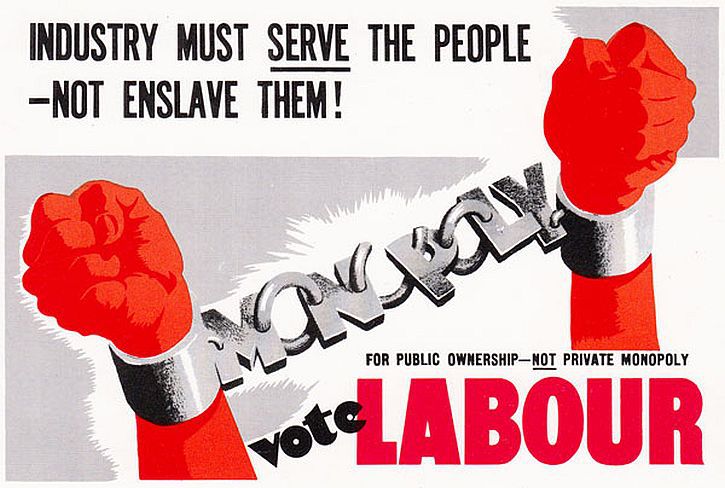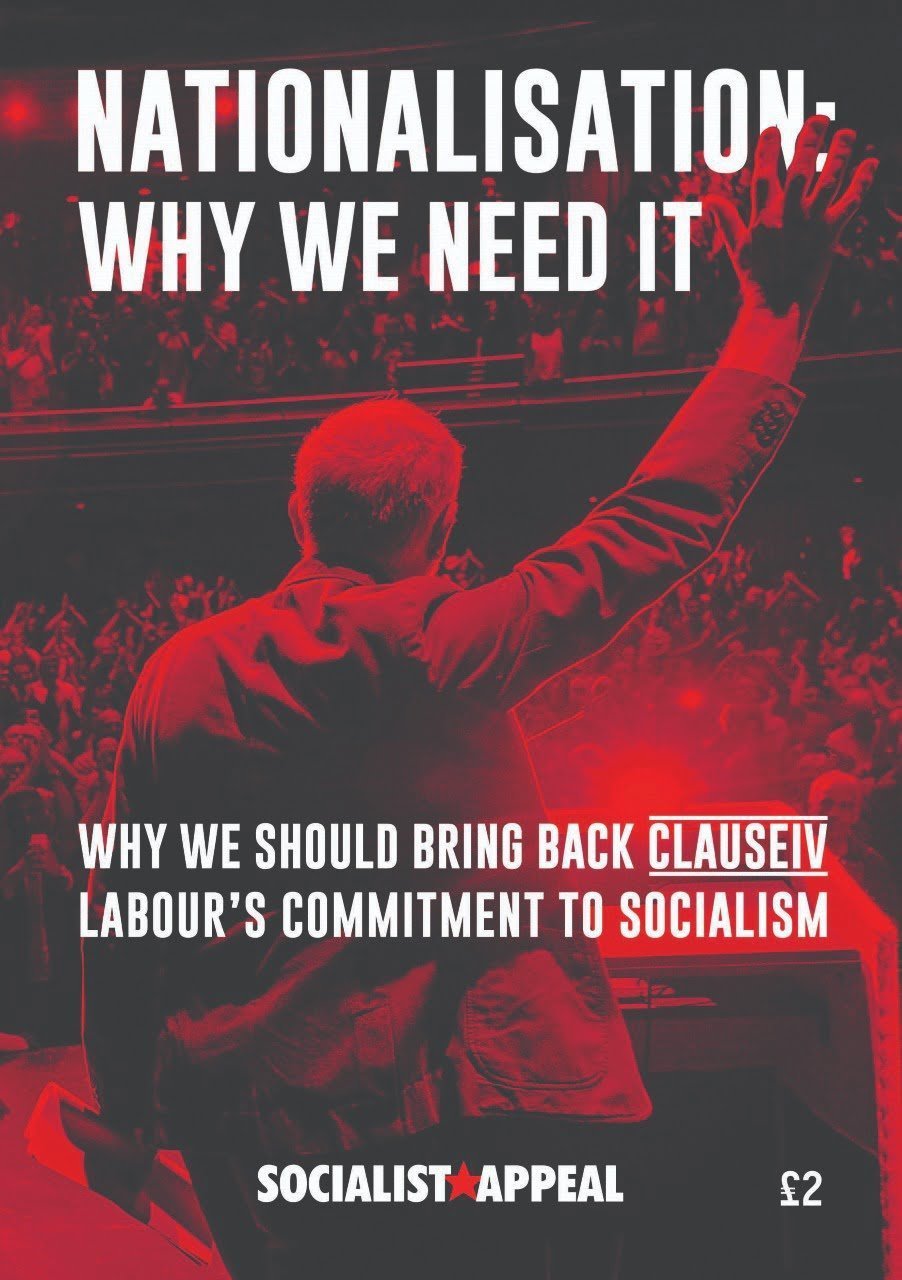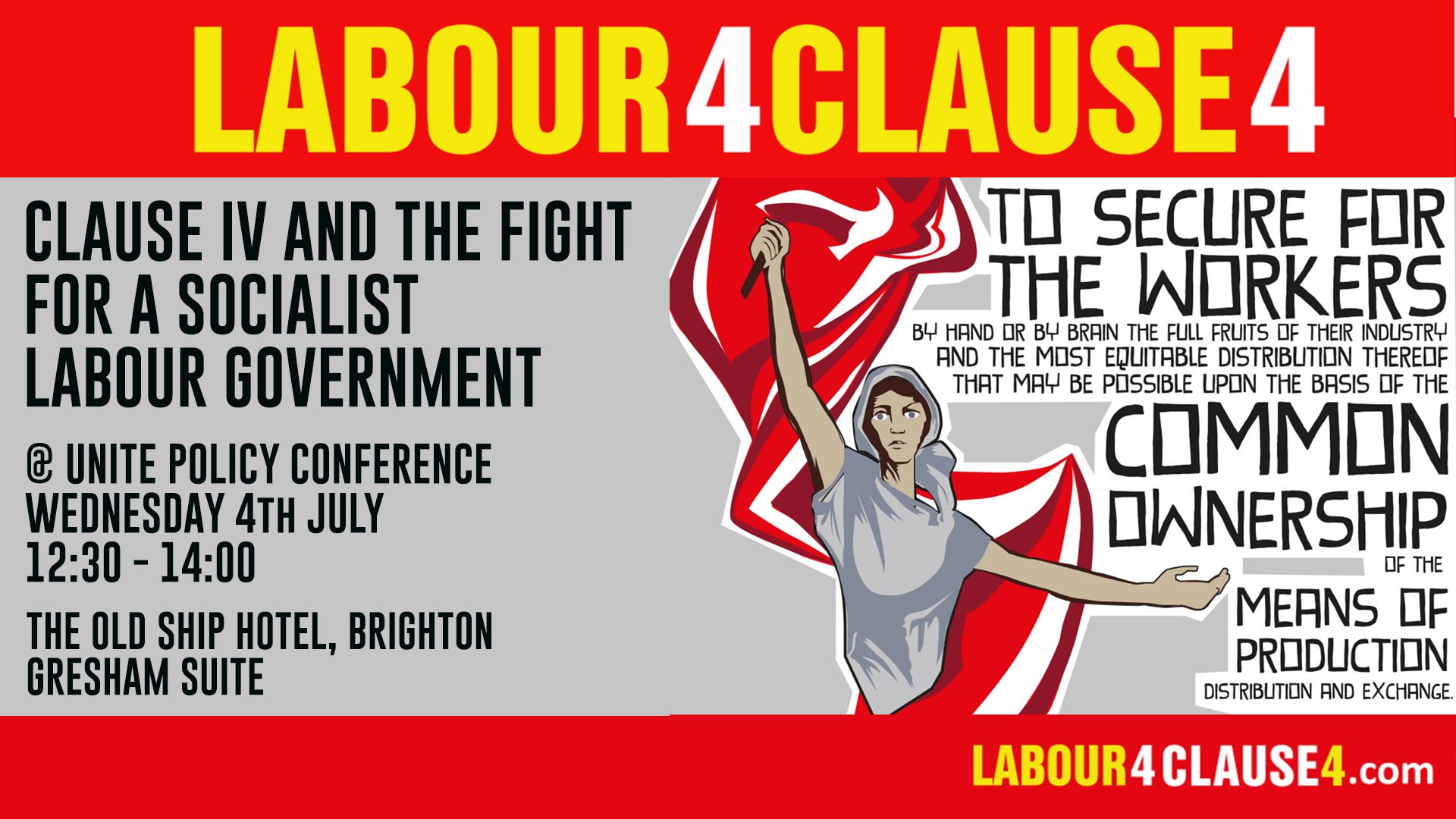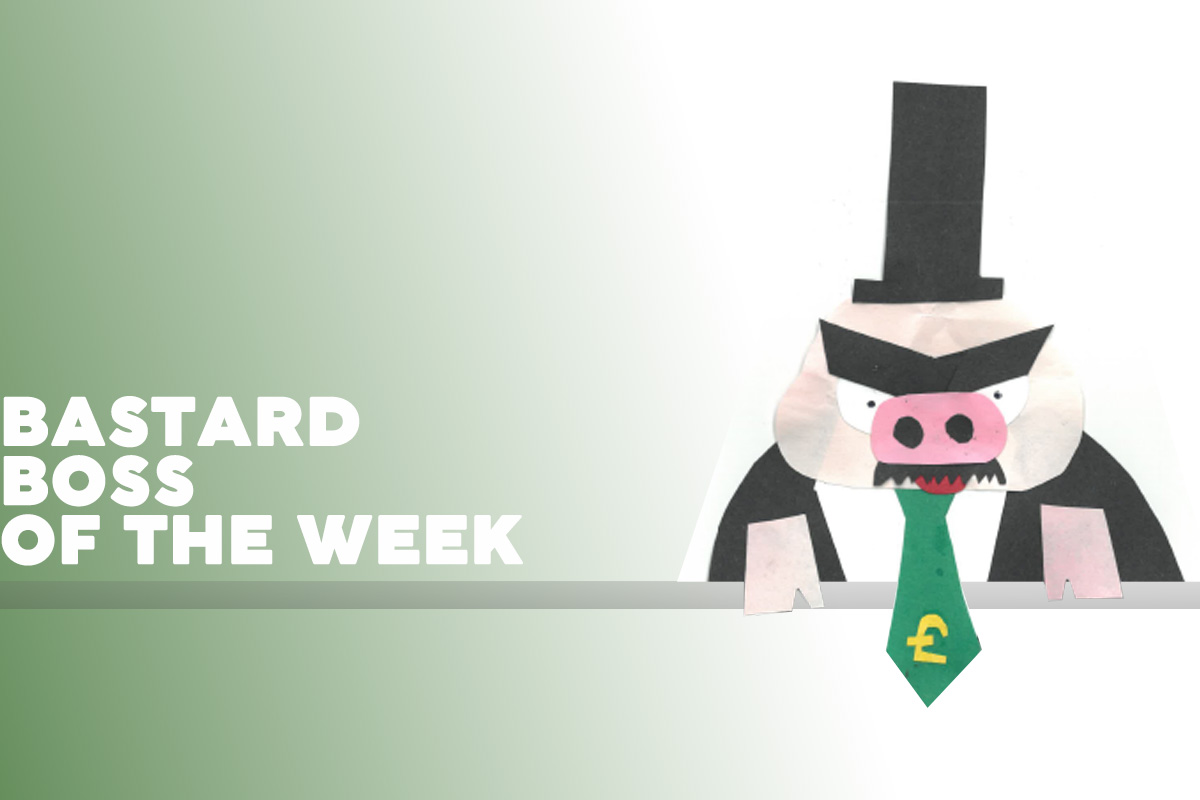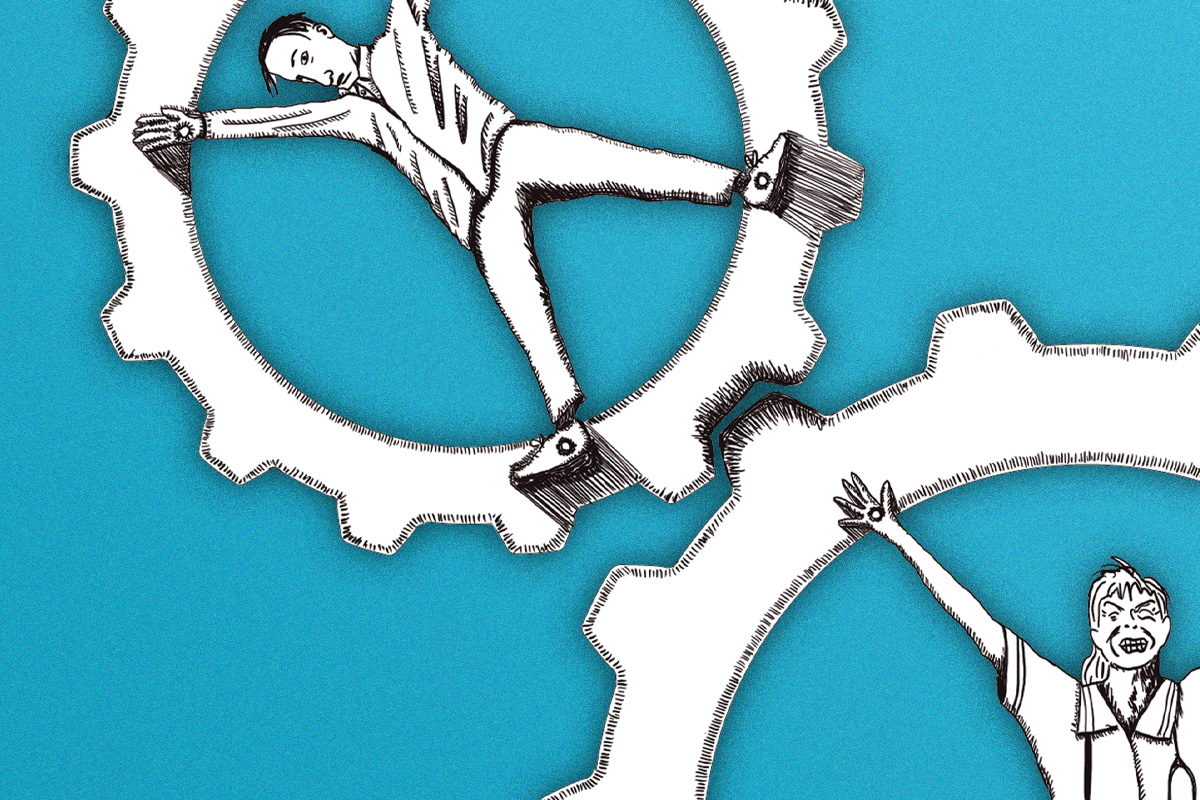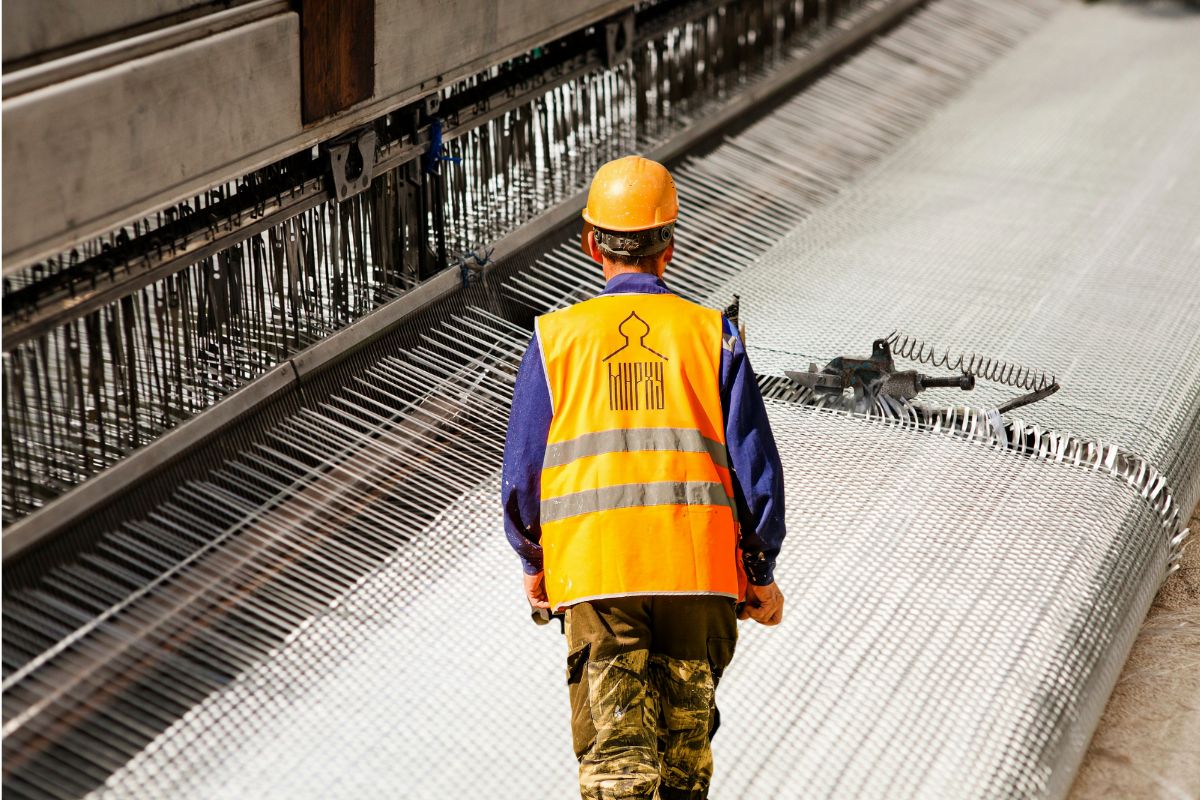The economy is dominated by a handful of giant profiteering corporations. In order to take back control, a Labour government would need to nationalise these banks and big businesses.
This article was recently published in our new pamphlet Nationalisation: Why we need it, which features a collection of articles about the demand for nationalisation, common ownership, and the restoration of Clause IV.
Today, delegates at the Unite the Union policy conference in Brighton will be discussing a motion calling for the restoration of Clause IV and Labour’s commitment to common ownership. We call on Unite delegates to vote for this motion, for the reasons outlined in this article.
This new Socialist Appeal pamphlet is available to buy through our online bookshop, Wellred Books. Buy your copy today!
Join Socialist Appeal activists in Brighton this week at the Labour4Clause4 campaign fringe meeting to discuss the way forward in the fight for a socialist Labour government.
CLAUSE IV AND THE FIGHT FOR A SOCIALIST LABOUR GOVERNMENT
Wednesday 4th July
12:30 – 14:00
The Old Ship Hotel (Gresham Suite), Brighton
The British economy is dominated by a handful of giant corporations, whose powerful tentacles have spread deep into our economic life.
If we add together the industrial, commercial and property companies, the top 150 giants hold about 80% of the assets held by the biggest 1,000 companies. They form the ‘commanding heights’ of the economy.
Of course, there are hundreds of smaller companies not included in the top 1,000. Nevertheless, the 80% figure is indicative of the power of the giant corporations. They hold a massive amount of control over the smaller companies, as these are normally suppliers or retailers for the biggest firms.
The top 150 monopolies are not monopolies in the sense that each dominates the supply of a particular product (although this is true in many cases). But as a group they dominate the economy as a whole. In order for a Labour government to take control of the economy, it would need to bring these companies into public ownership.
Concentration of power
 In 1975, the biggest 250 industrial and commercial companies owned 50% of the assets held by all UK companies. These firms controlled at least half of the assets of most major sectors of the economy. Since that time there have been a large amount of takeovers and mergers, creating an even greater concentration of power in the British economy.
In 1975, the biggest 250 industrial and commercial companies owned 50% of the assets held by all UK companies. These firms controlled at least half of the assets of most major sectors of the economy. Since that time there have been a large amount of takeovers and mergers, creating an even greater concentration of power in the British economy.
The FTSE (Financial Times Stock Exchange) 100 list provides details of the largest UK companies by stock market valuation. It includes many household names that dominate their respective sectors, such as Tesco in retailing, Unilever in food brands, and Sky in media. It also includes other major industrial firms, such as BAE Systems (aerospace and defence), GlaxoSmithKline (pharmaceuticals and biotech), and Rio Tinto (mining).
Added to this are the big private firms (not listed on the stock exchange). These include the tax-dodging Sir Philip Green’s Arcadia Group, along with many other high street names.
The top 100 companies are estimated to control half of manufacturing and industry, and the largest 200 about 60%. The top 10 UK companies alone have assets of £1,060 billion (as of 2015).
Banks and finance
 Banks, finance firms, and insurers make up 15 of the top 40 companies in the UK. Not only do they dominate the UK economy, but they also play a key role in the global economy. The UK banking sector is the biggest in Europe and the fourth biggest in the world.
Banks, finance firms, and insurers make up 15 of the top 40 companies in the UK. Not only do they dominate the UK economy, but they also play a key role in the global economy. The UK banking sector is the biggest in Europe and the fourth biggest in the world.
The ‘Big Four’ banks had combined assets of £6 trillion in 2015. This is equivalent to the total amount that the British economy produces in four years.
This money could be used to build houses and eliminate homelessness. It could be used to create jobs and rebuild the economy. But, instead, finance runs around the globe in search of the maximum profit – driving down wages, exploiting the poor and vulnerable, and destroying the environment in the process.
The ‘Big Four’ refers to the four largest UK-based banking groups: Barclays; HSBC; Lloyds Banking Group; and The Royal Bank of Scotland Group. Until 1970 it was the ‘Big Five’, when Westminster Bank and National Provincial Bank merged to form NatWest (now part of The Royal Bank of Scotland Group).
The assets and profits of the Big Four are eye-watering. HSBC is Europe’s biggest bank by assets (£1.94 trillion) and made £5.49 billion in profits in 2017. Barclays is next up in terms of assets (£1.37 trillion), with profits of £3.93 billion.
Lloyds is similarly profitable, making £4.04 billion in profits in 2017. It has assets of £0.85 trillion. At the height of the financial crisis, Lloyds Banking Group’s large amount of toxic assets led it to be insolvent. As a result, it was nationalised by the UK government, leaving UK taxpayers in ownership of a 43.4% stake in the bank.
The same was true of the Royal Bank of Scotland, which was also bailed out by taxpayers during the financial crisis. The public ended up with an 81% share in the bank, although the same old managers were left in charge. In effect, it was only the debts that were nationalised.
These banks and financial companies play a pivotal role in the economy. They are responsible for channelling resources to other businesses (large and small) in the form of loans and credit. Jim Bendell, a professor at Cumbria University, has shown that only 3% of money in circulation, in the form of notes and coins, is produced by the state. 97% of money is created by the banks out of nothing, in the form of loans.
Plans vs profits
 The planning and control of the economy is unthinkable without government control of the financial system. The whole financial system will need to be used in order to gear production for need, rather than for profit, mobilising society’s resources to where they are required most. For example, finances would be directed to the construction industry to carry out a massive house building programme.
The planning and control of the economy is unthinkable without government control of the financial system. The whole financial system will need to be used in order to gear production for need, rather than for profit, mobilising society’s resources to where they are required most. For example, finances would be directed to the construction industry to carry out a massive house building programme.
Of course, simply channelling resources to building firms will not guarantee that they will build social housing. It is not a lack of funds that stops them building, but a lack of profits. The capitalists will not borrow and invest unless they can see a profitable use for their cash.
Utilising society’s resources to the full, therefore, will require not only the nationalisation of the financial system but of industry as well. The financial and industrial sectors are intrinsically linked.
The biggest corporations are the key. For example, a construction giant like Carillion determines the operations of smaller engineering companies, of firms supplying equipment, and so on. Elsewhere, the decisions of the big five supermarkets control the smaller suppliers, dictating terms to them.
Planning the operations of these giants would therefore force the smaller firms to comply with their requirements. The thousands of small- and medium-sized firms are so dependent on the big firms – either as customers or suppliers – that controlling the giants gives control over the rest. There is hardly a single commodity that does not pass through the hands of the monopolies. Even the local chip shop uses the corn oil made by Unilever.
Take back control
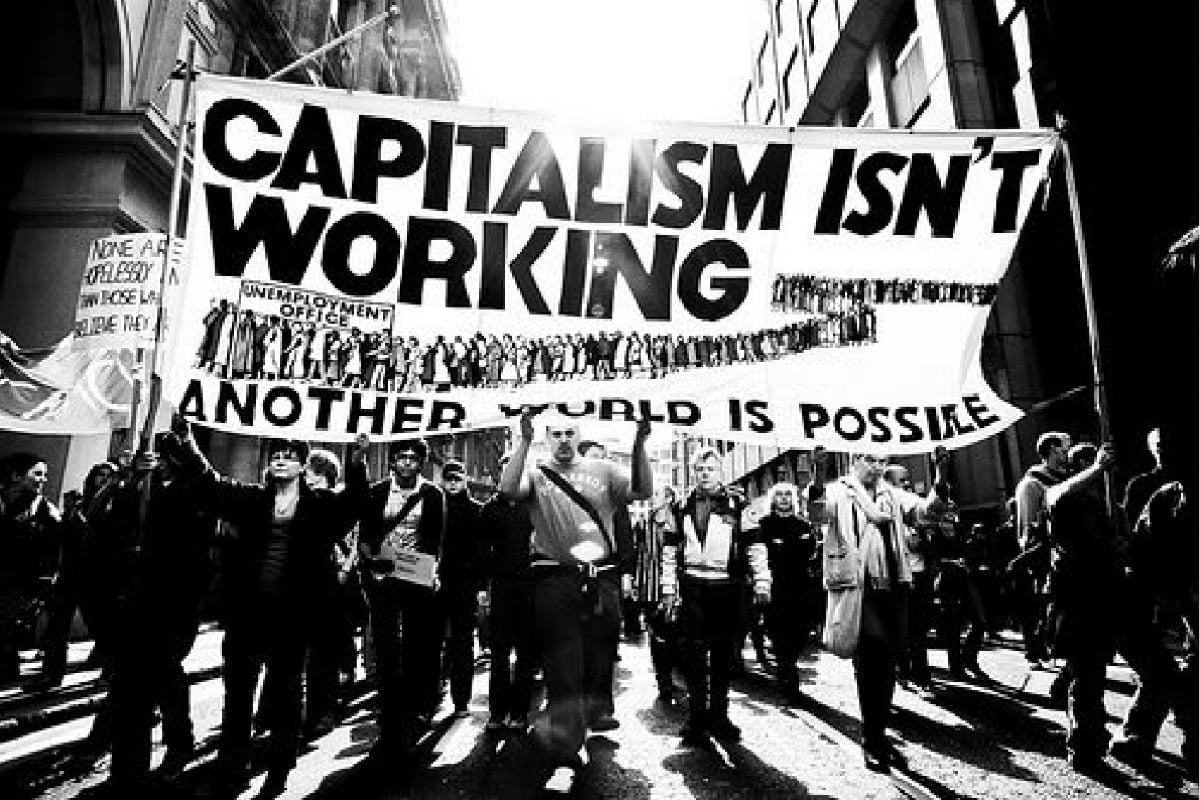 “Taking over high finance is the beginning of the way to change society for the better,” explains a pamphlet produced by the Fire Brigades Union (FBU) calling for the nationalisation of the banks. “It is not the only thing that needs to be done, but it would be central to any serious plan to rebuild the economy in the interests of the majority.”
“Taking over high finance is the beginning of the way to change society for the better,” explains a pamphlet produced by the Fire Brigades Union (FBU) calling for the nationalisation of the banks. “It is not the only thing that needs to be done, but it would be central to any serious plan to rebuild the economy in the interests of the majority.”
The FBU pamphlet continues by saying that the “economy does not exist to provide jobs for workers or to deliver growth. It functions to produce profit for a tiny minority, regardless of the needs of the rest of us.” That is precisely what needs changing.
If a Labour government is going to control the economy in our interests, it will need to nationalise these top 150 monopolies, banks and insurance companies, under democratic workers’ control and management. Only then can we plan the resources in society according to our needs, and not on the basis of the market and private profit.

